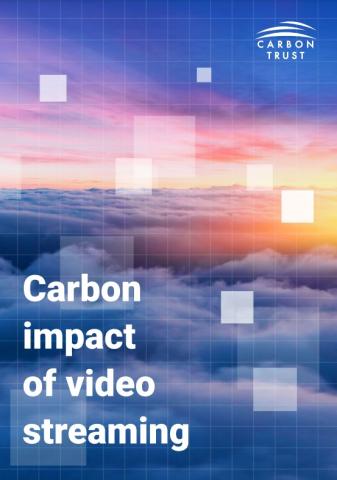The white paper has been developed by the Carbon Trust, in close consultation with members of DIMPACT - a collaborative project of world-class researchers from the University of Bristol and 13 of the world’s most innovative media companies – and made possible by funding from Netflix.
This white paper examines the carbon impact of streaming video on demand in order to improve understanding and inform future decisions.
Image

Overview
Key findings include:
- At an individual level, the carbon footprint of viewing one hour of video-on-demand streaming (approximately 55gCO2e in Europe) is very small compared to other everyday activities.
- The viewing device is typically responsible for the largest part of the overall carbon footprint.
- Changes in video quality, such as moving from high-definition to standard-definition, affect the bitrate required to transmit video data, but were found to have only a very small impact on carbon emissions.
- Improvements in technology mean that network equipment required to deliver the internet is continually becoming more energy efficient and, coupled with increased procurement of renewable electricity, the carbon intensity of ICT services over time are expected to drive down.
The white paper also sets out many opportunities for further research to continue to improve and add to the evidence base in this area.

